Create abstract backgrounds: 12 top tips
Discover how a rich and experimental backdrop can make your subject come alive.
Symphonies would lose their impact if they were all cymbals or violins, and the same is true with a painting. If every object is detailed to an equal degree, our eye doesn't know where to look. Often, combining a realistic centre of interest with a more abstract and textured background can act as an interesting balance.
This workshop focuses on some painting techniques you can use to create an interesting abstract background. Once you learn these basic procedures, you can apply them in many unique ways.
01. Get mixing
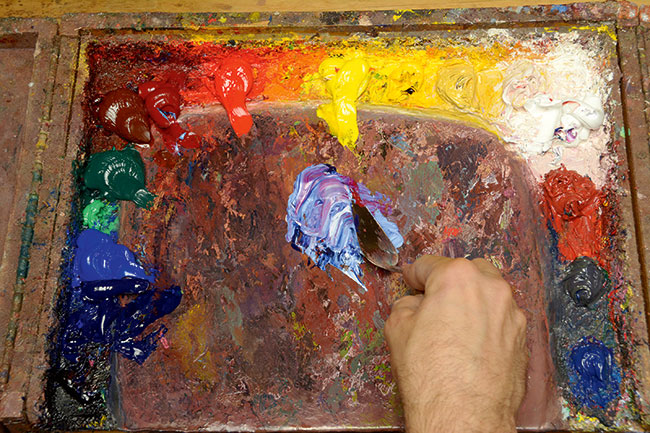
I start by laying out plenty of paint on my palette. The colours I'm laying out are Titanium White, Cadmium Yellow, Cadmium Lemon, Cadmium Orange, Cadmium Red, Permanent Rose, Burnt Sienna, Viridian, Cobalt Blue, Ultramarine Blue and Ivory Black.
The off-white mixes surrounding my white paint are from scraping my palette after previous painting sessions – it all comes in handy! Next, I mix a simple purple on my palette.
02. Let streaks show
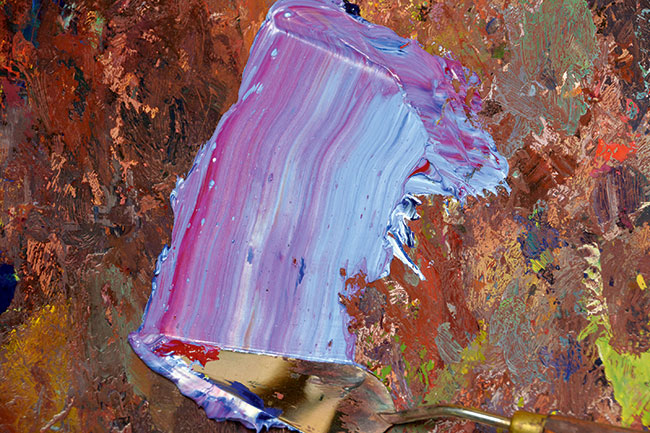
One fun technique I use is to only mix the colours up partially, and let the streaks of colour show in long bands when I lay down the palette knife strokes. I'm using a fairly large palette knife here, but this can be done with all types and sizes. Experiment on scrap pieces of canvas to get used to the effects you can achieve.
03. Load up your brush
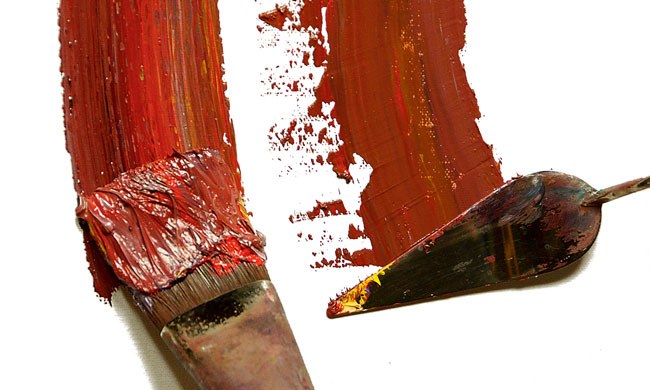
I load up either a brush or palette knife with a lot of paint, making sure not to over-mix the colours on my palette. In some respects, this colour-loading and streaking technique is the oil painting equivalent of what watercolour painters achieve when they load their brushes with several pure colours and put down a single stroke with a lot of water, letting the colours flow in swirling patterns on the paper.
04. Lay it on thick
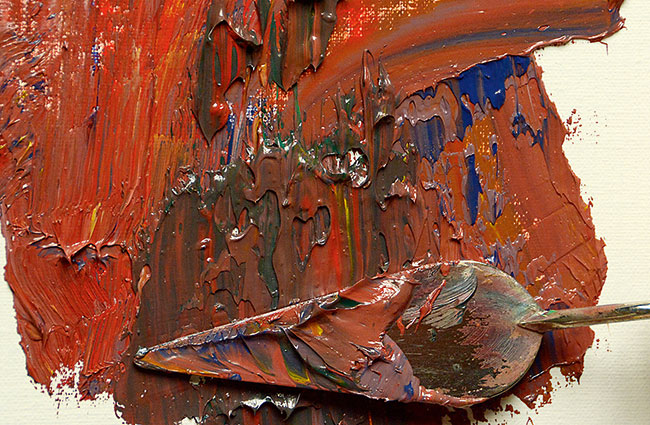
I scrape a large amount of paint off my palette and lay it down with a light touch to create a more broken, impasto layer of paint. Notice that the new stroke isn't that different in value from the colours lying underneath, which helps prevent the background from grabbing too much attention. You could even use the exact same colour again to subtly transform a boring area with texture, without changing the painting's design.
05. Keep it simple
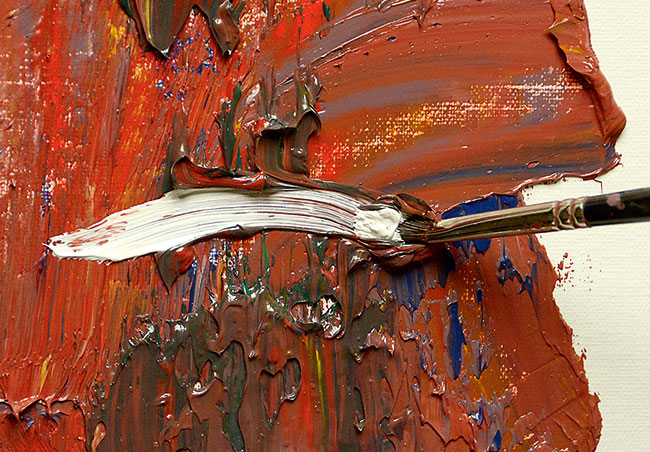
I can still make a clean stroke on top of the thickest area of paint, as long as my brush has enough paint on it and I make one confident stroke.
Use a light touch – if you keep playing with it, the colours below will bleed into it and you'll have to repaint the entire area and try again. I've often painted a single area over and over again to achieve the right balance of simplicity.
06. Reapply it all
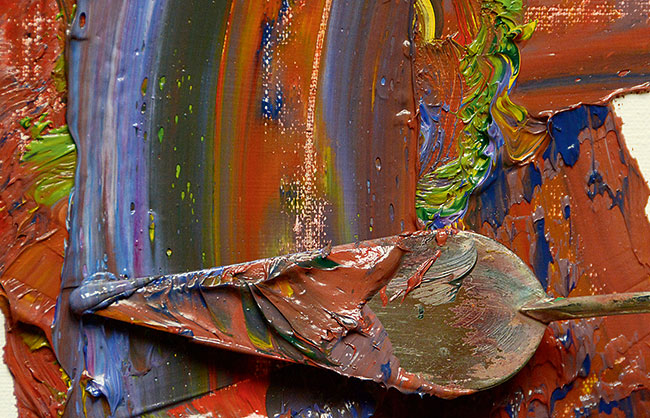
Another technique I use it to scrape everything from the canvas and reapply it with a single palette knife stroke to keep some of those colours I applied with the brush showing through in streaks. Even if you have to settle things down later, have fun and let loose when you're blocking in backgrounds.
07. Combine a variety of techniques
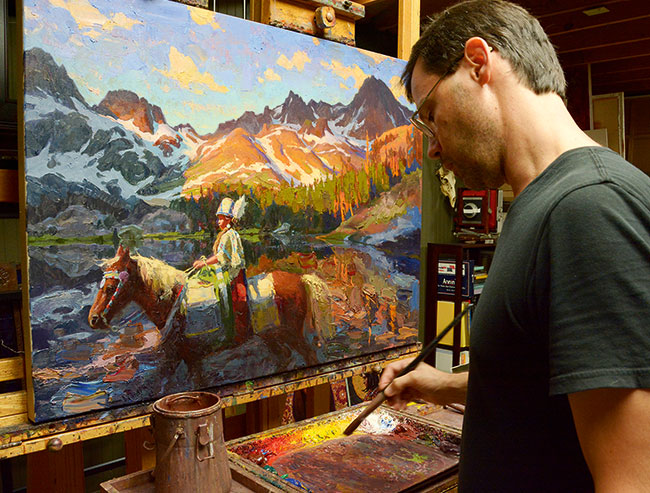
In the painting I'm currently working on, I'm combining a lot of techniques throughout the painting, without letting them overwhelm the subject and steal the spotlight. This painting is being created from two references (one of the girl on the horse, and one of the mountain scene). I did a small charcoal drawing before to plan out the position of the girl and horse.
08. Add a focal point
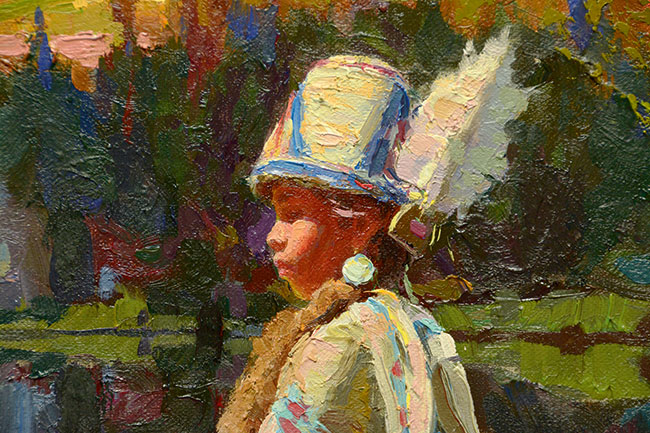
I rendered the girl's face with a brush and paid careful attention to the drawing here, since she's the centre of interest. Then I rendered the trees behind her in a narrow range of darker tones to bring out the light of her face. You want your background to be interesting, yet support the main focus. It's easy to get too carried away with backgrounds like this, so that they overpower everything else.
09. Work in abstract
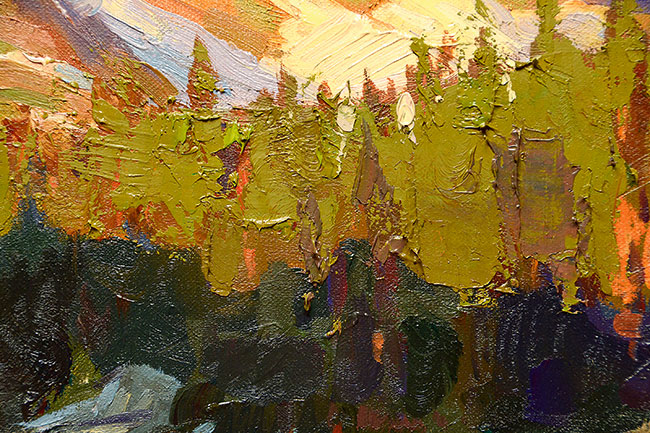
Other areas of the background offer opportunities to experiment with some of the abstract techniques I've mentioned already. These shapes only become trees in the context of the larger painting.
The challenge is to paint them in an interesting manner, while still getting them in the proper place, with the correct values and colour, so that from far away they create the illusion of the story you're trying to tell. The goal is to make an interesting abstract up close, that's convincingly real from far away.
10. Create water
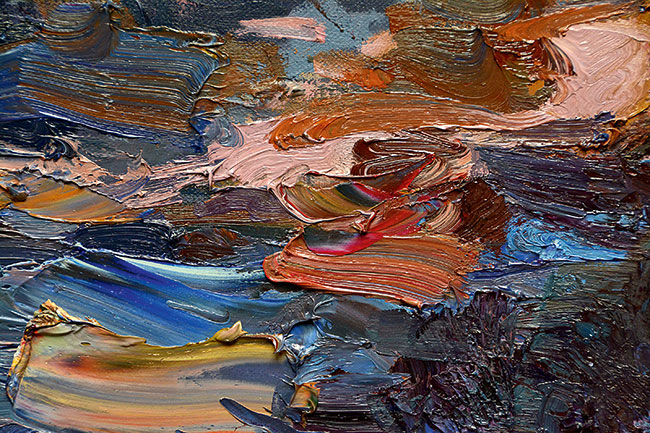
To paint the water I combine a wide variety of oil painting techniques. Notice the mixture of palette knife strokes with brushstrokes – I've mixed some paints directly on the canvas in places, and in other cases I've laid clean strokes on top and left them alone.
11. Dry brush
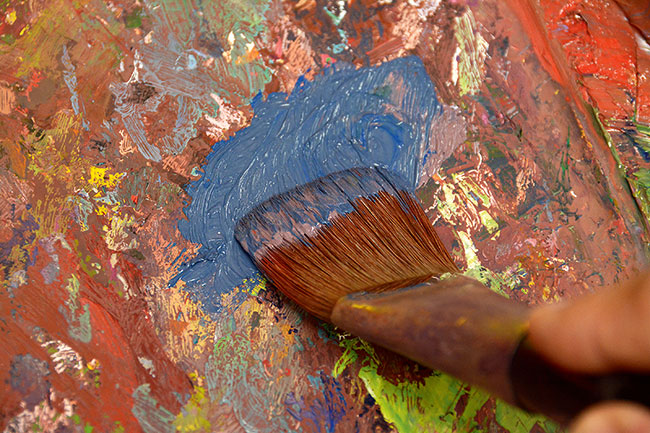
For this dry brushing technique, I'm mixing a simple greyish-blue on my palette that I intend to use as a unifying element over an area that has become too disjointed. Sometimes this is premeditated, but more often I use dry brushing when I realise that I've gone a bit too far with the wild colours and need to tie things together again. Repainting the area entirely is one option, but I would rather dry brush to slightly modify it and take advantage of the different textures this technique will create.
12. Drag over the dry paint
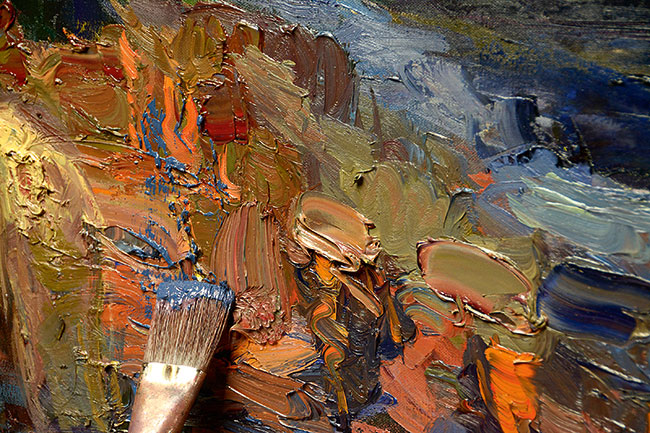
Once the area of water on the lower right of the painting had been drying for a few weeks, I used the brush to lightly drag paint over the thick textures to unify it without ruining what's underneath. This technique works best over dried thick paint, but you can use it on thin paint with a soft brush and use the texture of the raised surface to catch the paint. Dry brushing over thick paint is fine, but you have to be careful not to put thin washes over thick paint that's not dry enough, since it will eventually crack.
This article originally appeared in Paint & Draw issue 3; buy it here!
Related articles:

Thank you for reading 5 articles this month* Join now for unlimited access
Enjoy your first month for just £1 / $1 / €1
*Read 5 free articles per month without a subscription

Join now for unlimited access
Try first month for just £1 / $1 / €1
Get the Creative Bloq Newsletter
Daily design news, reviews, how-tos and more, as picked by the editors.
